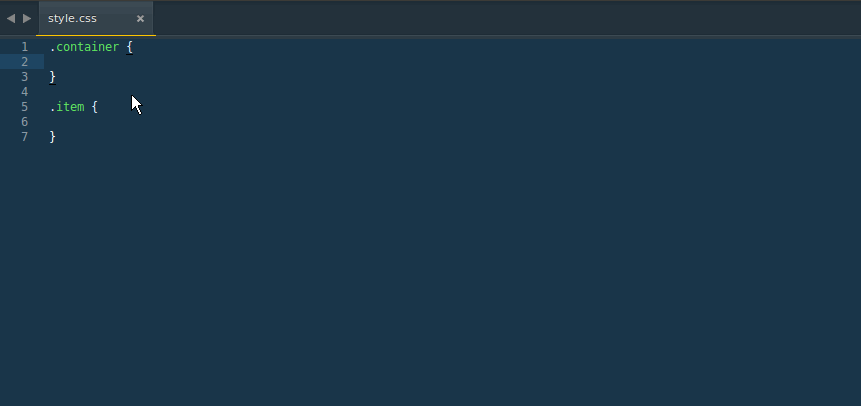Flexbox Snippets
CSS Flexbox snippets for Sublime
Details
Installs
- Total 17K
- Win 10K
- Mac 5K
- Linux 2K
| Dec 15 | Dec 14 | Dec 13 | Dec 12 | Dec 11 | Dec 10 | Dec 9 | Dec 8 | Dec 7 | Dec 6 | Dec 5 | Dec 4 | Dec 3 | Dec 2 | Dec 1 | Nov 30 | Nov 29 | Nov 28 | Nov 27 | Nov 26 | Nov 25 | Nov 24 | Nov 23 | Nov 22 | Nov 21 | Nov 20 | Nov 19 | Nov 18 | Nov 17 | Nov 16 | Nov 15 | Nov 14 | Nov 13 | Nov 12 | Nov 11 | Nov 10 | Nov 9 | Nov 8 | Nov 7 | Nov 6 | Nov 5 | Nov 4 | Nov 3 | Nov 2 | Nov 1 | |
|---|---|---|---|---|---|---|---|---|---|---|---|---|---|---|---|---|---|---|---|---|---|---|---|---|---|---|---|---|---|---|---|---|---|---|---|---|---|---|---|---|---|---|---|---|---|
| Windows | 0 | 0 | 0 | 0 | 0 | 0 | 0 | 0 | 0 | 0 | 0 | 0 | 0 | 0 | 0 | 0 | 0 | 0 | 0 | 0 | 0 | 0 | 0 | 0 | 0 | 0 | 0 | 1 | 0 | 0 | 0 | 0 | 0 | 0 | 0 | 0 | 0 | 0 | 0 | 1 | 0 | 0 | 0 | 0 | 0 |
| Mac | 0 | 0 | 0 | 0 | 0 | 0 | 0 | 0 | 0 | 0 | 0 | 0 | 0 | 0 | 0 | 0 | 0 | 0 | 0 | 0 | 0 | 0 | 0 | 0 | 0 | 0 | 0 | 0 | 0 | 0 | 0 | 0 | 0 | 0 | 0 | 0 | 0 | 0 | 0 | 0 | 0 | 1 | 0 | 0 | 0 |
| Linux | 0 | 0 | 0 | 0 | 1 | 0 | 0 | 0 | 0 | 0 | 0 | 0 | 0 | 0 | 0 | 0 | 0 | 0 | 0 | 0 | 0 | 0 | 0 | 0 | 0 | 0 | 0 | 0 | 0 | 0 | 0 | 0 | 0 | 0 | 0 | 0 | 0 | 0 | 0 | 0 | 0 | 0 | 0 | 0 | 0 |
Readme
- Source
- raw.githubusercontent.com
CSS Flexbox snippets for Sublime 

Install
To install through Package Control, search for Flexbox Snippets. If you still don't have Package Control in Sublime Text, go get it. If you insist to not install it, you can download the package and put it manually inside your Pacakages directory. It should work but will not update automatically.
Snippets
Works for CSS/LESS/Sass/SCSS/Stylus & Vue Component.
display
trigger: flexbox⇥
display: ${1:flex|inline-flex};
flex-direction
trigger: flexdir⇥
flex-direction: ${1:row|row-reverse|column|column-reverse};
flex-wrap
trigger: flexwrap⇥
flex-wrap: ${1:nowrap|wrap|wrap-reverse};
flex-flow
trigger: flexflow⇥
flex-flow: ${1:<'flex-direction' (row|row-reverse|column|column-reverse)> || <'flex-wrap' (nowrap|wrap|wrap-reverse)>};
justify-content
trigger: flexjust⇥
justify-content: ${1:flex-start|flex-end|center|space-between|space-around};
align-items
trigger: flexitems⇥
align-items: ${1:flex-start|flex-end|center|baseline|stretch};
align-content
trigger: flexcont⇥
align-content: ${1:flex-start|flex-end|center|space-between|space-around|stretch};
order
trigger: flexorder⇥
order: ${1:0};
flex-grow
trigger: flexgrow⇥
flex-grow: ${1:0};
flex-shrink
trigger: flexshr⇥
flex-shrink: ${1:1};
flex-basis
trigger: flexbasis⇥
flex-basis: ${1:auto|<'width' (%|rem|em|px)>};
flex
trigger: flex⇥
flex: ${1:none|auto|[<'flex-grow' (0)> <'flex-shrink' (1)> || <'flex-basis' auto|<'width' (%|rem|em|px)>>]};
align-self
trigger: flexself⇥
align-self: ${1:auto|flex-start|flex-end|center|baseline|stretch};
Prefixing Flexbox
Flexbox requires some vendor prefixing to support the most browsers possible. It doesn't just include prepending properties with the vendor prefix, but there are actually entirely different property and value names. This is because the Flexbox spec has changed over time, creating an “old”, “tweener”, and “new” versions.
Perhaps the best way to handle this is to write in the new (and final) syntax and run your CSS through Autoprefixer, which handles the fallbacks very well.
Contributing
If you want to help, please read the Contributing guide.
History
For detailed changelog, see Releases.
References
License
MIT License © Breno Polanski
